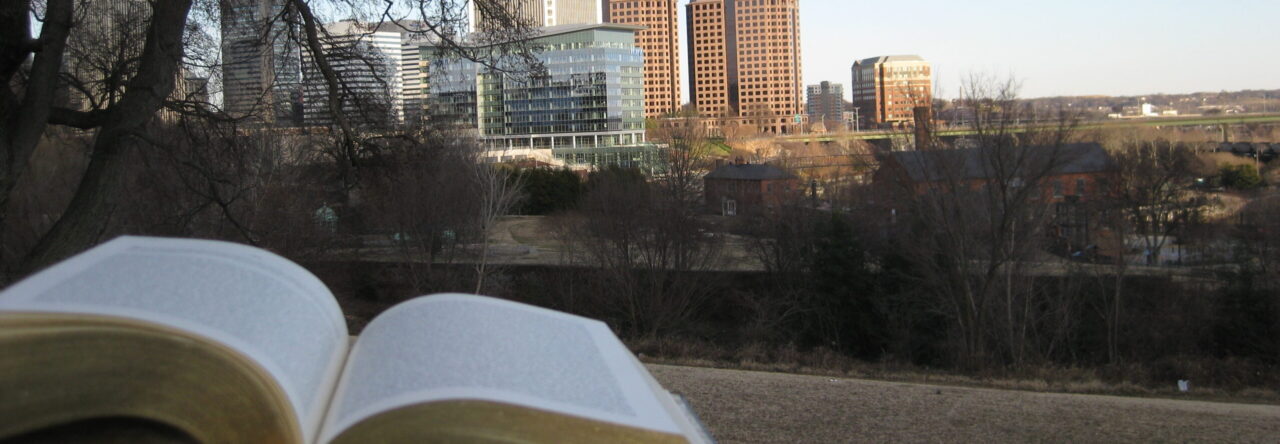One thing that intrigued me while reading the book was the burial ground for African-Americans in Richmond. It’s a place where several very different things are put together in the context of a space – and they all play off of each other. First of all, there’s always something a little off-putting about a burial ground that is not meticulously kept – like a graveyard that has fallen into disrepair or an unmarked tombstone. There’s this sense that somehow, we’ve forgotten the dead, which is unsettling to us, because most cultures throughout the world take great care to ensure that doesn’t happen. But there was no care taken, no honoring the deceased, in the burial ground.
Second, the space was once considered sacred ground to African-Americans in Richmond. To be buried anonymously and callously in a space your ancestors once called sacred is different from being buried anonymously in just any space. To me, the history of a place qualifies the events that take place in that space in a new way. The history of a place means something.
And third, people weren’t just buried in the burial ground. Some were killed there – hanged on the city gallows. There’s a difference between standing in the spot where someone is buried and standing in the spot where someone died. And on top of all that, the graves where people were buried were often washed away by rainstorms (and their coffins washed into the James River). The people who are and were entombed in the burial ground were often forgotten in life, and now forgotten in death.
It feels like there’s a lot of “story” here.
(The source I found was the memoir-ish of Christopher McPherson, a free black clerk in Richmond, who described the burial ground in the book. There’s probably a lot I could learn from his collection of papers about general day-to-day life in Richmond as a person of color in the late 1700s and early 1800s, in addition to more details about the burial ground.)

Leave a Reply